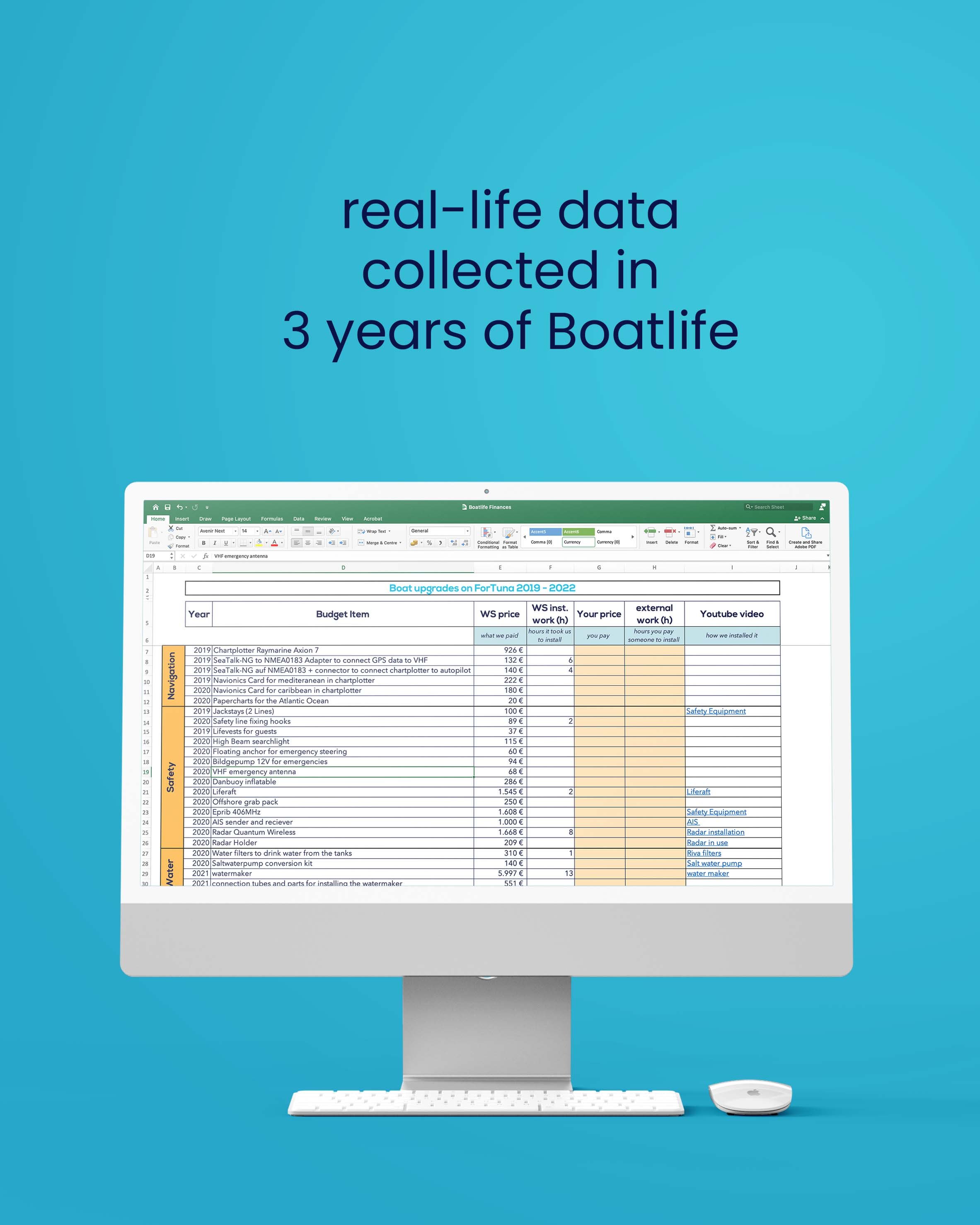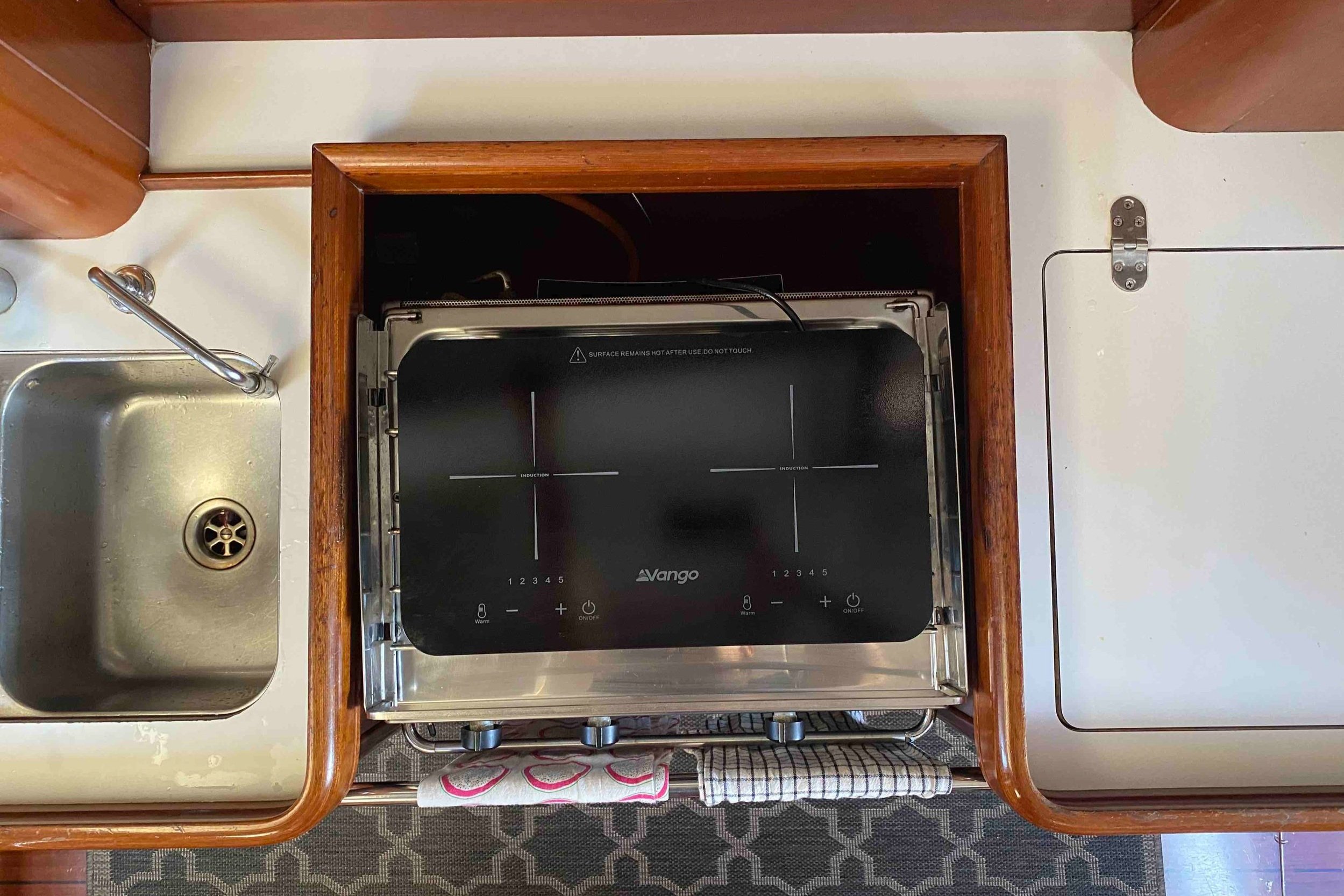Electrical Energy on Sailboats (Boat Electricity 101)
When you live on land, electricity feels like a never-ending commodity. From your home to public places like the airport, plugs are offered to you to charge your devices. Things change drastically once you move onboard. Unless you intend on spending your days in the marina plugged to the shore electricity system, you will have to store and create the electrical energy you need.
When we bought ForTuna, we did not have a clear idea of what kind of electrical set-up we would need on our boat. We were unaware of how much the electrical set-up would impact our daily comforts or our safety during longer passages. The 180W solar panel and 360Ah lead batteries ForTuna had on board felt like enough. However, very soon, we would learn there is a big difference between the energy necessities for a sailboat holiday and the electricity needs for full-time liveaboards. Especially if we wanted green and sustainable energy. But let's start from the beginning.
Blog post overview
Alternator
Solar Panels
Wind Generator
Hydro Generator
Generator
Sailboat Energy Basics
Most boats are either 12V or 24V base systems (or a mixture of both). All board electronics, navigation equipment, instruments, fridge, water pumps etc. are running on 12V or 24V DC. Compared to a typical household, this makes it way more efficient. For example, the razor you use, or the wifi router you installed, all those devices need 5 or 12V, so they need to convert the 220V or 110V you are feeding them and lose energy while doing so. However, appliances like notebooks or washing machines need higher voltage. In this case, you need to pair your batteries with an Inverter to be able to use them.
Energy storage (Batteries)
ForTuna has 2 battery systems, as most boats do. One for the motor and one for the "house". The motor battery is only used to start the engine. It is a battery slightly different to regular batteries. It features a higher crank voltage to support the high electricity required in a short time to start the engine without damaging the battery itself. The "house" (service ) batteries take care of the rest. From board electronics to charging your phone and keeping the fridge cold. Some boats have further battery division, such as a separate battery for the anchor winch or bow thruster.
The current sailboat market offers 3 different types of batteries for sailboats: Lead, AMG and Lithium. If you want to know more about the differences between marine batteries on here. Our first house batteries were "normal" lead acid truck batteries, bringing us far! We had 2 batteries of 180Ah, resulting in 360Ah in total. However, once we started taking boatlife more seriously, equipped ForTuna for longer crossing and began to sail in more remote places, our initial system was not strong enough to support our lifestyle. In this blog post, we discuss the difference between lead and lithium and why we chose BattleBorn Batteries.
not sure how much batteries you need?
Energy generation (solar, wind, generator, hydro and alternator)
Batteries have no use if you can not recharge them with electrical energy. Besides relying on shore power in marinas, sailors have multiple choices to generate energy. Depending on where you sail, some might be more appropriate than others. On ForTuna, we rely on solar panels, a wind generator and our alternator to create the electrical energy we need on board.
Alternator
The alternator (a dynamo connected to the main engine) is our least used method to generate electricity. It is a great way to repurpose energy created when the motor runs, but we avoid it otherwise. We try to focus on renewable energies, so besides the horrible noise, an alternator is not an option for us due to the need to burn fossil fuels. Besides, running the engine without actual load for extended periods can cause damage to the engine. Our alternator creates about 600W when the motor runs at 2000rpm. When running the engine, we use the energy created directly to avoid losing any energy needed to charge the batteries. Whenever we motor, we turn on the water maker, charge our notebooks or try to use the power somehow.
Solar panels
Solar panels have been our first choice to generate energy on our sailboat. Currently, we have about 600W of solar panels on board. ForTuna features flexible panels on the bimini and deck and rigid panels on the stanchions. Solar panels are a great way to create energy. They are easy to install and need no maintenance besides some cleaning once in a while. The technology is advanced enough to be easily accessible to everyone, and there are multiple ways to integrate solar panels on your boat.
Wind generator
Wind can be a sailor's biggest friend and enemy. Both while sailing and generating energy. Opinions about wind generators vary between sailors, but we are very satisfied with our wind generator. The Caribbean Sea features constant winds of about 15 knots, so our wind generator rarely has a day off. We especially love the wind generator because it creates electrical energy during the night! Obviously, solar panels don't so the wind generator takes up the slack during the night shift. It's a great way to avoid energy loss during the night, both at anchor for fridge and mooring light and during night sails for autopilot and navigation electronics. A downside to wind generators can be the sound emitted or the weak efficiency. This depends a lot on the model of the generator. The model we installed on ForTuna does not emit any sounds up to 30kts and already starts performing well with winds of 15kts.
Hydro generator
Besides wind and sun on a boat, one also has the chance to use the movements of the sea to create energy. To do so, you need a hydraulic turbine, which converts the energy of flowing water into mechanical energy, paired with a hydroelectric generator, which converts this mechanical energy into electricity. We have no experience with hydro generators but love the idea. To make use of it properly, one has to sail a lot!
Generator
If sun, sea and wind feel too unreliable to you, there is always the option of a generator. We never consider it for two main reasons, the sound it emits and the fact it needs fossil fuels to work. Believe us, there is nothing more annoying than being in a secluded bay and having your neighbour turn on the generator and disturbing the whole bay. It just feels like double lousy karma, both for damaging the environment and annoying your sailboat neighbours.
How much does it cost to life on a sailboat
Energy Usage (Inverter)
The last piece of the electrical setup on a sailboat is the inverter. It is unnecessary if you base your whole electrical use on 12 or 24V, but chances are high you want to use those 220V electrical plugs on your boat. When we started our journey, we had a small inverter converting the 12V from the batteries to 220V AC max. 500 W. It allowed us to charge one notebook at a time, but we could not activate our 220V system on board. Today we feature a Victron Multiplus 3000W, which allows us to use the electrical energy like we would on land.
If you would like to know more about how to set up a balanced electrical set-up on your boat and define how much energy you need, read on here.









